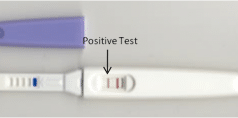
Amid Maine’s diverse landscapes and bustling industries lies a pressing health concern—the prevalence of back health issues among its residents. From fishermen to tech professionals, many face health challenges rooted in Maine’s unique economic and geographic backdrop. As they become increasingly widespread, the question arises: how can the state effectively address and treat these conditions?
This exploration seeks to understand the common back-related problems in Maine and shed light on potential treatment options. You will also know the difference between chiro and ortho approaches as you read on.
Common Back Problems In Maine
The state’s unique blend of physical industries, changing demographics, and distinct climate introduces a myriad of factors contributing to back health concerns. Diving into Maine’s back dilemma requires a deep understanding about the common back issues faced by its residents:
- Lumbar Strain/Sprain
In Maine, lumbar strain or sprain could be prevalent due to its economy’s deep-rooted connection with physically demanding industries like fishing, logging, and farming. The repetitive bending, lifting, and twisting involved in these occupations can strain the lower back muscles, leading to potential injuries. Plus, sudden movements during recreational activities, such as hiking in Maine’s extensive woodlands or skiing, can also contribute to these issues.
- Herniated Disc
The population of Maine faces the risk of herniated discs due to both sedentary lifestyle and manual labor. Extended periods of sitting, common in desk jobs, coupled with the strain from occupations like shipbuilding or construction, can lead to wear and tear on the spinal discs, making them more prone to herniation.
- Degenerative Disc Disease
As the state’s demographic includes an aging population, there is growing concern about the prevalence of degenerative disc disease among older residents. Over time, and due to the wear and tear of daily activities, spinal discs gradually lose their elasticity. This is a natural aging process but may be exacerbated by jobs demanding repetitive motions, such as the work in Maine’s agriculture or manufacturing sectors.
- Spondylolisthesis
Stress fractures from activities or sports, common among the state’s active youth and adults, can sometimes lead to spondylolisthesis. Plus, degenerative changes in the spine due to aging or repetitive strain can also result in one vertebra slipping over the one beneath it.
- Scoliosis
While scoliosis is often genetic and detected in childhood, Maine’s remote communities could face challenges in early detection and intervention. External factors like carrying heavy backpacks during school or lack of ergonomic seating can exacerbate the condition.
- Sciatica
Navigating the expansive landscapes of Maine requires considerable commuting for work or access to amenities. Those spending extended periods driving or in sedentary jobs might be more prone to sciatica due to the pressure on the lumbar spine region, irritating the sciatic nerve.
- Compression Fractures
The state’s elderly population, especially post-menopausal women, might be more susceptible to compression fractures. The colder climate in the state can sometimes discourage people from engaging in regular outdoor activities. This reduced activity can lead to a decrease in bone density, increasing the risk of fractures related to osteoporosis.
- Muscle Tension And Spasms
Maine’s working population, particularly in high-stress jobs or industries, might be more vulnerable to muscle tension. The state’s seasonal fluctuations, with long winters, might also limit regular outdoor physical activity, leading to occasional muscle spasms when individuals engage in sudden exertions.
- Postural Problems
The rise in desk jobs and tech industries in the state, like the rest of the country, can contribute to postural problems. Extended screen time, coupled with the lack of ergonomic awareness, can lead to a range of spinal alignment issues among Maine’s working population.
The unique challenges posed by Maine’s environment and economy highlight the importance of effective back care for its residents. On that note, it’s time to explore the diverse treatment options available, highlighting how the state addresses these back dilemmas.
Available Treatments
Before diving deep into the realm of available treatments for the common back problems among Maine’s population, it’s important to differentiate chiropractic care and orthopedic care. While both address musculoskeletal issues, their approach, training, and treatment methods vary.
Chiropractic Care
Chiropractors primarily focus on spinal adjustments and the alignment of the musculoskeletal system. Here are some available chiropractic treatments in the state:
- Basic Chiropractic Care
Rooted in the belief of spinal adjustment, chiropractors in Maine offer manipulative therapies. These treatments aim to realign the spine, reduce pain, and improve overall spinal health. While many swear by its effectiveness, it’s crucial to seek out licensed practitioners to ensure safety.
- Acupuncture
With origins in ancient Chinese medicine, acupuncture involves inserting fine needles at specific points in the body. The belief is that this can rebalance the body’s energy and alleviate pain. Maine has seen an uptick in acupuncture clinics, a testament to its growing popularity.
- Holistic Treatments
Beyond the direct treatments, lifestyle change—advised by chiropractors in Maine—offers a holistic approach to back care. Proper ergonomics at work, regular exercise, maintaining an optimal weight, and posture correction can play monumental roles in both preventing and managing back pain. The state’s natural setting offers opportunities for outdoor activities, promoting physical health and indirectly benefiting spinal health.
Orthopedic Care
On the other hand, orthopedic care entails the expertise of medical doctors who specialize in the diagnosis, treatment, and surgery of musculoskeletal injuries and disorders. Here are available orthopedic care options:
- Physical Therapy
Maine boasts a number of well-established physical therapy centers. Here, therapists work closely with patients to devise tailored exercise routines. The goal? Strengthen the back, improve flexibility, and address the root causes of pain rather than just the symptoms.
Physical therapy provided by orthopedic experts is a proactive approach, focusing on prevention and long-term health. It empowers patients, giving them tools and techniques to manage and, in many cases, alleviate their pain.
- Medication
Medication, both over-the-counter and prescription-based, plays a pivotal role in back pain management. From non-steroidal anti-inflammatory drugs (NSAIDs) to muscle relaxants, they are known to offer immediate relief. However, they’re not without risks. Long-term use may lead to side effects like gastrointestinal issues or liver damage.
In Maine, medical professionals walk the tightrope, ensuring effective pain management while minimizing potential medication-induced complications.
- Surgery
When conservative treatments prove ineffective or if the complexity of a spinal condition is beyond conventional management, surgical intervention becomes a vital consideration. In Maine, skilled orthopedic surgeons are equipped to undertake a plethora of surgical procedures tailored to specific back issues. It’s worth noting that certain conditions, such as severe herniated discs, advanced spinal stenosis, or significant spondylolisthesis, may necessitate surgical solutions more frequently than others.
The Takeaway
Maine’s distinct environment and economy pose unique spinal health challenges for its residents. Yet, the state offers a rich array of treatment options, blending chiropractic and orthopedic care. As the state addresses these back health issues, its primary focus is on taking proactive measures, making informed choices, and utilizing a combination of traditional and modern treatments to promote the well-being of its community.








